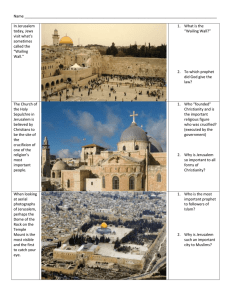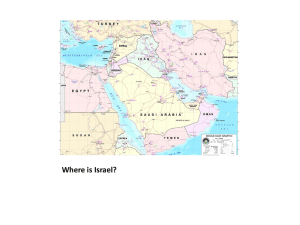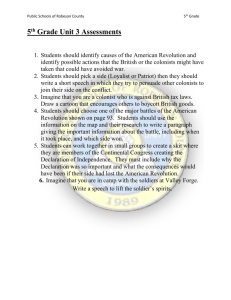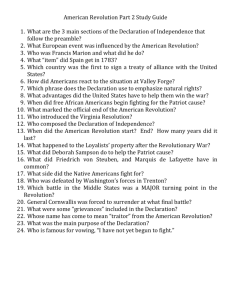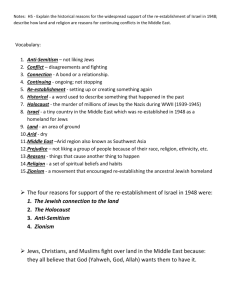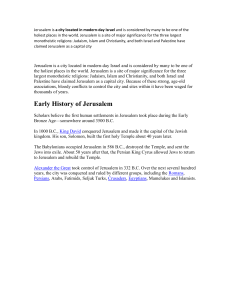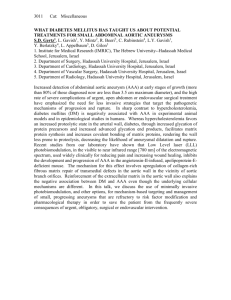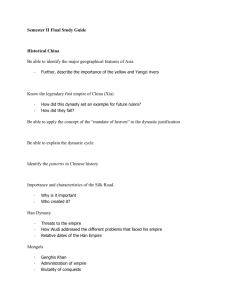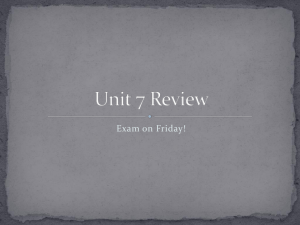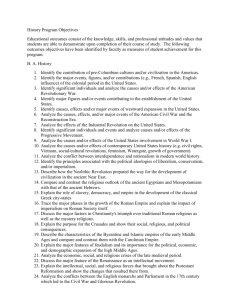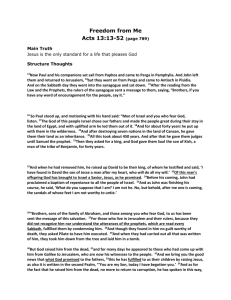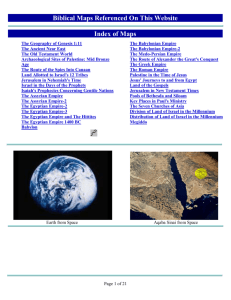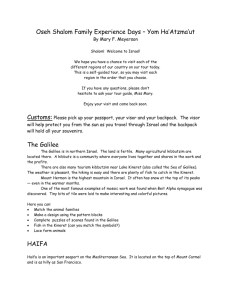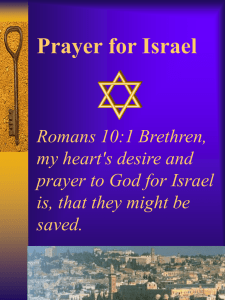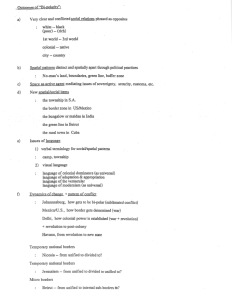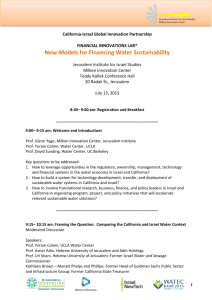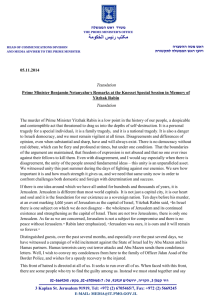World History Pre-Post Assessment Do Not Write on the Test 1. In
advertisement
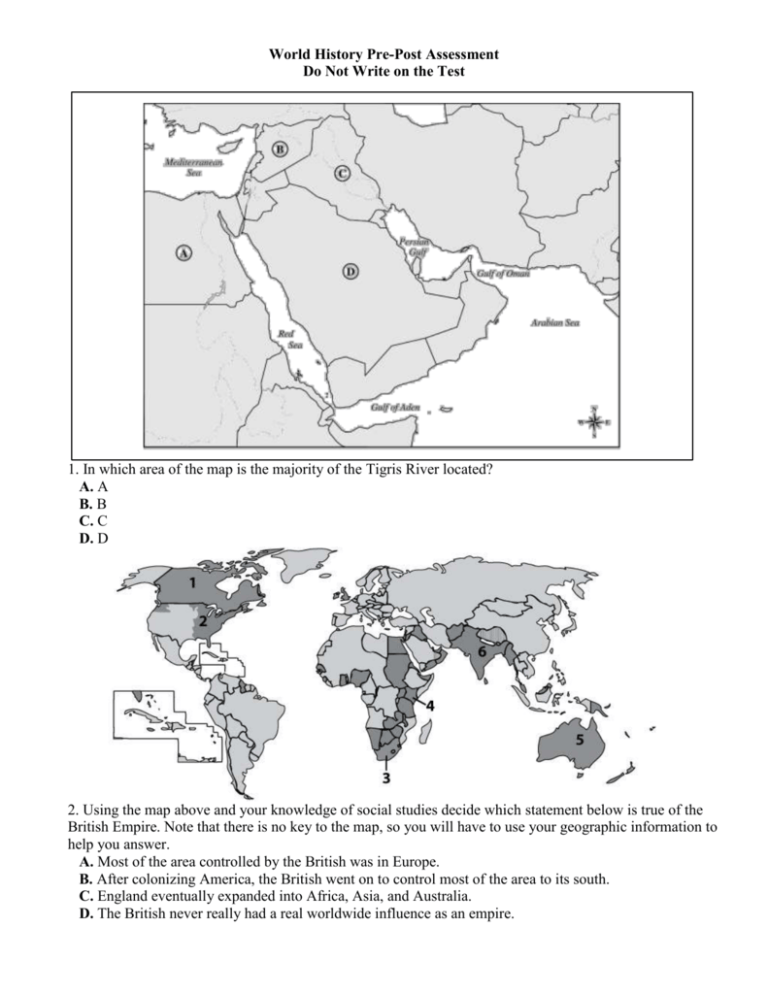
World History Pre-Post Assessment Do Not Write on the Test 1. In which area of the map is the majority of the Tigris River located? A. A B. B C. C D. D 2. Using the map above and your knowledge of social studies decide which statement below is true of the British Empire. Note that there is no key to the map, so you will have to use your geographic information to help you answer. A. Most of the area controlled by the British was in Europe. B. After colonizing America, the British went on to control most of the area to its south. C. England eventually expanded into Africa, Asia, and Australia. D. The British never really had a real worldwide influence as an empire. 3. The graph above represents the consequence of what historic event? A. the world-wide influenza epidemic B. the arrival of Hernan Cortez from Cuba C. the Aztec policies of war and sacrifice D. the depletion of hunting grounds and tropical rain-forests 4. In the flow chart of actions leading to World War I, what should go in the empty sequence? A. The Ottoman Empire declares war on Russia B. Italy changes sides C. The neutrality of Belgium is violated D. France attacks Germany 5. All of the following contributed to the impact of Hammurabi's Code except— A. Laws were placed in public for all to see. B. Punishment for serious crimes was removal of the accused's eye. C. Laws contained a clear path for justice. D. Punishment was appropriate for the crime. 6. Which is the best summary for the effects of Roman law on later civilizations? A. It established equal rights for all residents. B. It became the basis for laws in North America. C. It created the first parliamentary-style government. D. It set the style of federalism used in the United States. 7. Most of the beautifully carved statues created in ancient Greece celebrated their belief in which of the following? A. afterlife B. multiple gods and goddesses C. nature D. children I Magna Carta II Justinian's Code III Hammurabi's Code IV Ist Democracy 8. What is the correct historical sequence for the above list? A. I, II, II, IV B. II, III, IV, I C. III, IV, I, II D. III, IV, II, I 9. Why is the year 1215 important in history? A. William of Normandy conquered the Anglo-Saxon in Britain. B. Europe began to break into nation states under monarchies. C. England developed a law code based on Roman laws. D. King John was forced to acknowledge the rights of his subjects. 10. The Crusades and current problems in the Middle East are similar in which of the following ways? A. Jerusalem is still an issue as it is claimed by several religions. B. Europe continues sending troops to gain control over Jerusalem. C. Israel is seen by all as a stabilizing force in Jerusalem. D. Jerusalem is more under the control of Muslims than Christians. I. Byzantium attacked by Turks II. Seljuk Turks grab power in Middle East III. Saladin's army invades Jerusalem IV Crusaders invade Middle East 11. Which of the following is the correct sequence for the events above? A. I, II, III, IV B. II, I, IV, III C. III, II, IV, I D. I, II, IV, III 12. Which of the following events completes the timeline above? A. Machiavelli writes The Prince B. Avignon Papacy C. Dante writes The Inferno D. Black Death 13. Which of the following helped bring about the Reformation? A. scientific discoveries of the Enlightenment B. destruction caused by the Thirty Years' War C. humanist ideas from the Renaissance D. Roman philosophers dislike of the Church 14. Which of the following was the major reason that Europeans explored and colonized the Western Hemisphere in the 16th century? A. cultural interaction B. economic opportunity C. political revolutions D. population explosion I. French Revolution II. Declaration of the Rights of Man III. Declaration of Independence IV. Glorious Revolution 15. Which would be the correct sequence for the above list? A. I, II, III, IV B. II, IV, I , III C. IV, III, I, II D. IV, I, II, III 16. Industry grew so fast that it needed a large labor force. Which of the following explains the practice of child labor during the Industrial Revolution? A. Children were a major source of labor because women were allowed to work. B. Children were used to deliver goods, but not to assemble goods. C. Children were used in factories because they were cheaper to hire. D. Children were used in factories because all of the men were working on farms. 17. All of the following are effects of World War II except A. rise of two new superpowers B. devastation and loss of lives C. start of the Atomic Age D. beginning of a race for space 18. Which of the following is the main reason that the United States made the decision to drop an atomic bomb on Hiroshima and Nagasaki? A. to stop the Kamikazi pilots from destroying American ships B. to prevent futher Japanese losses in the war C. to free all of the Pacific islands under Japan's domination D. to prevent losses of life in the invasion of Japan 19. The principle of the Declaration of Independence that most influenced the French Revolution was A. guarantee of certain basic human rights B. abolishment of the policy of mercantilism C. authority to overthrow a monarchy D. promise of equality of social classes 20. Which of the following terms completes the diagram? A. Communism B. Fascism C. Imperialism D. Capitalism 21. Which of the following is a variable or factor present in both the current clash between Israel and Palestine and the resolution of South African apartheid? A. war was declared in both situations B. One side held power, while the other felt anger and helplessness C. oil reserves disputed in one, while civil rights drove the other D. NATO was involved in both situations 22. What advice would Mohandas Gandhi give to the Palestinians in their struggle with Israel? A. resist without violence B. continue fighting, however possible C. become a part of the nation of Israel D. form alliances with Saudi Arabs - Became familiar with the Bolshevik movement in 1919 in France - Was a dedicated follower of V.I. Lenin - Became the leader of the Vietnamese Communist movement 23. Who is described above? A. Mao Zedong B. Pol Pot C. Ho Chi Minh D. Ngo Dinh Diem 24. Which of the following factors aided the spread of communism in Eastern Europe following World War II? A. ethnic unity in the Balkans B. tradition of democracy in Greece C. presence of Soviet troops in Germany D. cultural identity with Poland

